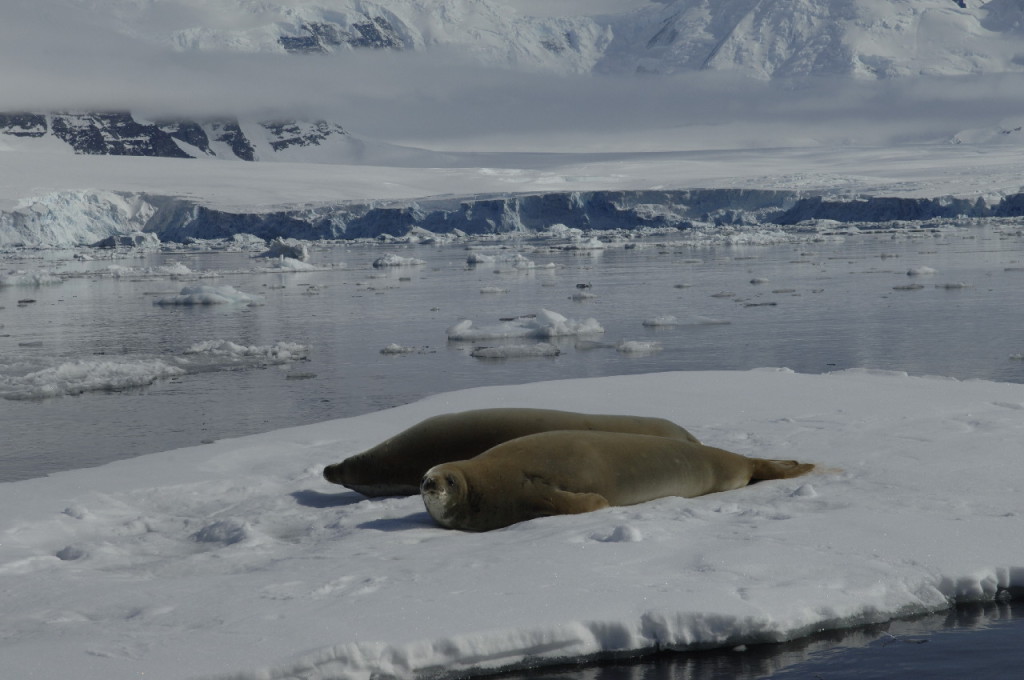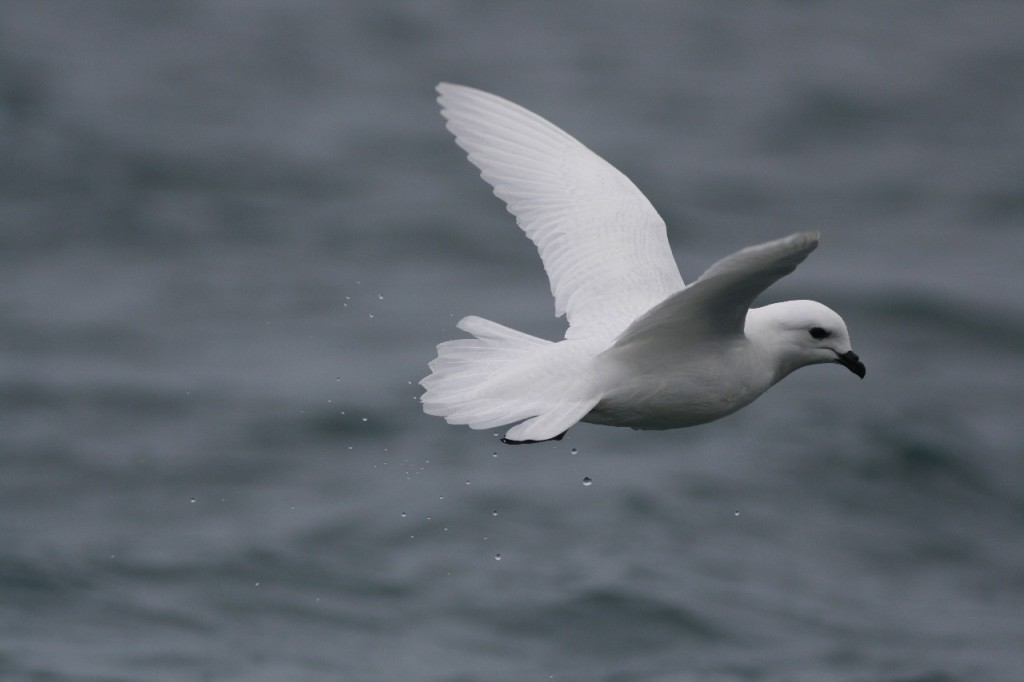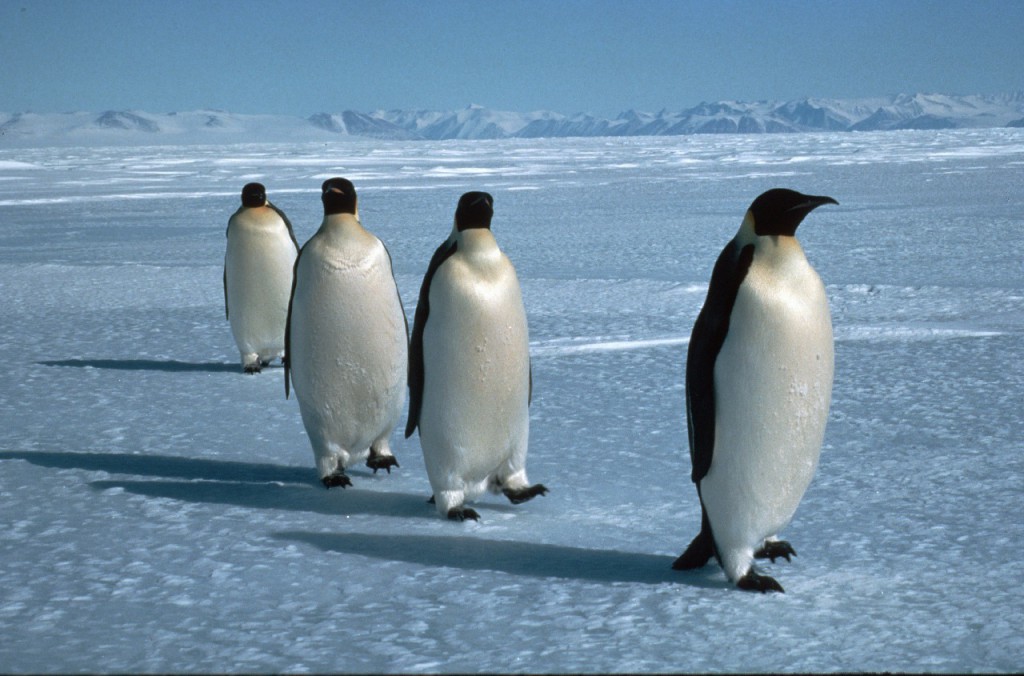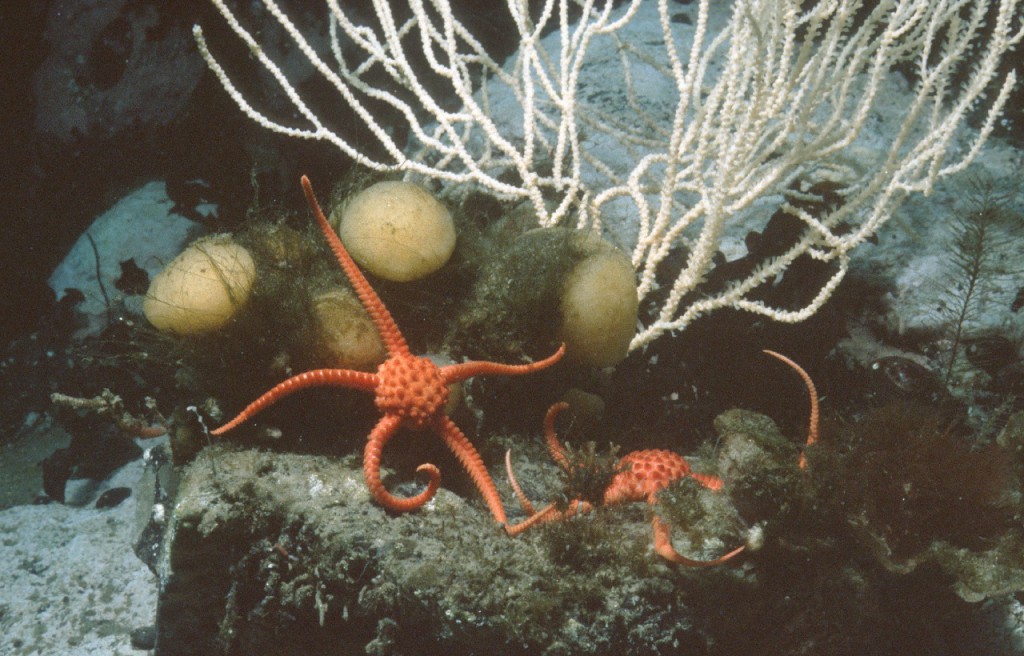Week 4: Monday 27th February to Sunday 4th March: Completing our biological sampling in the eastern Weddell sea
6 March, 2012 RRS James Clark Ross
Rachel Downey (British Antarctic Survey)
We have been working in some amazingly calm waters for the last two weeks, and are now breaking through the sea ice again as we leave this part of the eastern Weddell sea for a rendezvous with our Halley base colleagues. We have been sailing close to the Antarctic ice shelf, and have been able to see not only how impressive they look close up but also how colossal they are too! We have been getting this close to the ice shelf in order to map the shelf break, as Antarctica has some of the steepest shelves in the world, which can plunge from 400 m to 2000 m in just 2 kms. We have also found some really interesting gully features too, which will help our colleagues back at BAS to understand underwater sediment processes in this area.
Our journey through the sea ice towards the ice shelf has also given us dozens of wildlife spotting opportunities. Groups of Emperor penguins and Crabeater seals can be seen resting on many of the icebergs we pass. Large groups of Minke whales are also fond of feeding in this area, so there are plenty of opportunities during our working day to snap a couple of photos for the folks at home. Birds are surprisingly common round here as well, with petrels and terns often seen flying with the ship or resting on sea ice around us.



In just over 2 weeks we have nearly completed our biology sampling of a wide selection of sea floor environments. Our trawls and underwater camera footage have shown us just how incredibly diverse and colourful Antarctic sea floor life really is. We have come across muddy sea cucumber ‘cities’, bryozoa (moss animals) reefs that are as impressive as any tropical coral reef, and rocky sponge gardens jam-packed full of animals.
Excitingly brittle stars of all different shapes, sizes, and colours were found in great numbers this week. We all took turns to climb into the nets to get them out carefully with tweezers! BAS are currently heading the largest brittle star DNA bar-coding project of the Southern Ocean, using this abundant group to help us understand the evolution of Antarctic sea floor life. The southern Weddell Sea is a completely new sampling area for this project, and me and my colleagues, Chester Sands and Huw Griffiths, hope to learn lots of new facts about this charismatic group.

Working and living on a ship has been an incredible experience for all of us scientists on this cruise. All the crew have been superb in helping us complete our scientific work. Even though we are on a moving ship in one of the remotest areas you can find on the globe, we still enjoy some of the everyday touches of normal life, such as regular circuit training in the bowels of the ship to keep us in shape, and even a pub quiz after a hard day’s work. During this cruise, we have successfully gained our sea legs in some of the roughest oceans in the world, become expert whale and penguin spotters, and have got firsthand experience of just how amazing and unique Antarctic marine life really is.